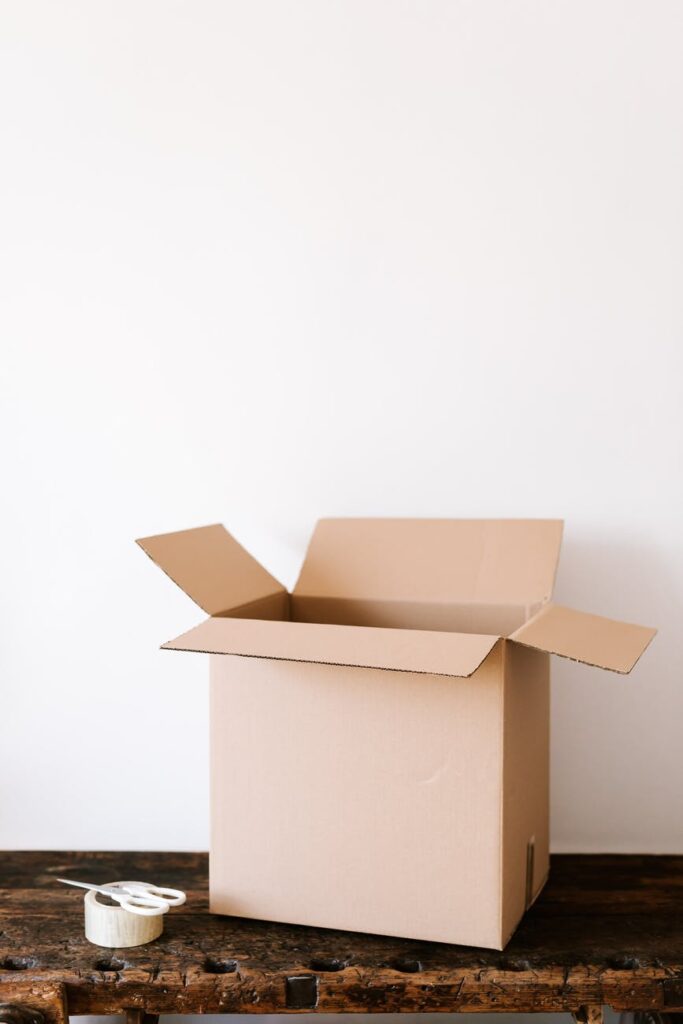We hope you like the products we recommend! Just so you know this post contains affiliate links and I will be compensated if you make a purchase after clicking our links.
Just when you think you’ve got a handle on your cat’s eating habits, they do something like start chewing on cardboard. It’s not as if our cat doesn’t have 24-hour access to a myriad of toys. She’s fed on a high-meat cat food too.
Maybe I shouldn’t be surprised. Last year, we were redecorating our spare room, and we caught her chewing on the old wallpaper that we were peeling from the wall. We only realised that she’d swallowed some of it when she regurgitated it again.
Again, this is a cat that is absolutely spoiled rotten.
It made us realise that cats are more than capable of displaying confounding behaviours that, as owners, we need to keep an eye on. It’s why our last few posts have been food-centric. For example, can cats eat raw pork? And can cats eat chicken liver?
We also have many parcels and deliveries coming to our house. It’s a lot of cardboard boxes and packaging. Fortunately, our cat isn’t interested in eating it, but she does love sitting in the empty boxes or playing with them. She’s not the only cat that likes doing this either. We’ve read plenty of online accounts about felines that will ignore expensive cat toys favouring a box or packet.
Most cats seem to enjoy the feel, shape and smell of cardboard. Some even like biting it into small pieces and swallowing them. But why do cats chew on cardboard, and is it normal?
Why cats chew on cardboard
Firstly, it can be a sign of teething in kittens. Chewing or biting down on a rigid object may help relieve any discomfort in their gyms. Cats start teething between 10 weeks and 6 months, so they may grow out of the behaviour. If you suspect a teething issue, then make sure your kitten has a range of toys to chew on. Biting on the cardboard can also be an oral hygiene issue for older cats. Cats are prone to gum disease, plaque, and tooth decay, so it’s important to ensure you clean their teeth or use a product that helps them maintain a healthy mouth.
Cats may also be chewing cardboard to mark their territory. It may be rubbing its face and cheeks against the rigid edges to lay a scent. Chewing is another way of adding a scent to something. Our cat always inspects everything that comes into the house by rubbing her smell against mail and boxes.
Another reason may be that your cat likes the smell or taste of the adhesive or paper used on the package. Be careful about letting them do this because there can be unsuitable chemicals in the residue left behind after delivery.
Strangely enough, your cat could also be adapting the box to be more comfortable. One respondent on the Q&A website Quora writes that she thought her cat was just chewing for fun but soon realised he was making a semi-circle just the right size to rest his chin on. We’ve said it before, cats aren’t stupid, and a little interior design isn’t beyond their abilities.
Cats are natural hunters. It’s part of their instinct, and they have an innate tendency to rip and tear prey. If they’re playing with the box, pretending its prey, then it makes sense that they’ll display some of the behaviours we associate we hunting — biting and tearing with teeth. It may be that the cat is just playing a game with the box, or it could be a sign of anxiety or boredom, so your cat must have other toys to play with too.
There’s also an eating disorder that’s pretty rare in cats but could be behind the compulsion to chew cardboard. It’s called Pica, and humans can be diagnosed with it too. Pica is when a cat eats things that aren’t food. We’re not talking about the odd piece of wallpaper or dirt but when there is a compulsion to eat inedible items. Commonly, it’s things like carpet, plastic or stones. Talk to your veterinarian if you think your cat has Pica. Eating the wrong things can be dangerous for their digestive system. They can be a choking hazard too. Pica is sometimes caused by a nutritional deficiency.
Overall, many cats bite and chew cardboard. It’s relatively common, and plenty of owners online agree that their cat does it too.
As already discussed above, it can signify a nutritional deficiency or anxiety. It can also be dangerous if they’re swallowing the cardboard. In these cases, it’s good to speak to a professional or ensure cardboard is kept someone secure and away from any curious cats.
Keep an eye on what’s happening after they use their teeth — are they ignoring the pieces, or are they eating it? Later is it being thrown up or regurgitated? Cats should absolutely be discouraged from swallowing cardboard.
Also, be careful that the boxes don’t have rough edges or sharp corners because cats could cut the inside of their mouths.
